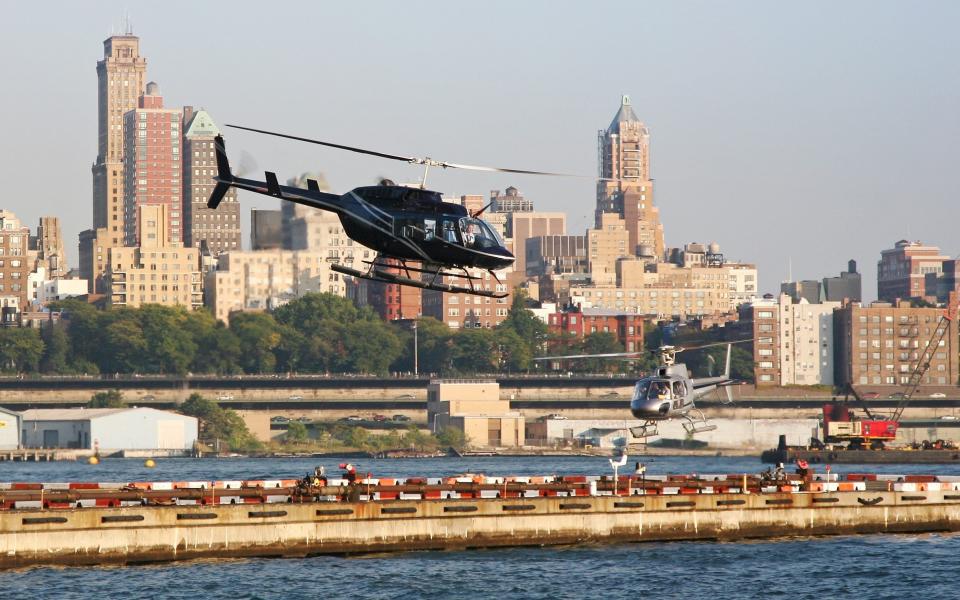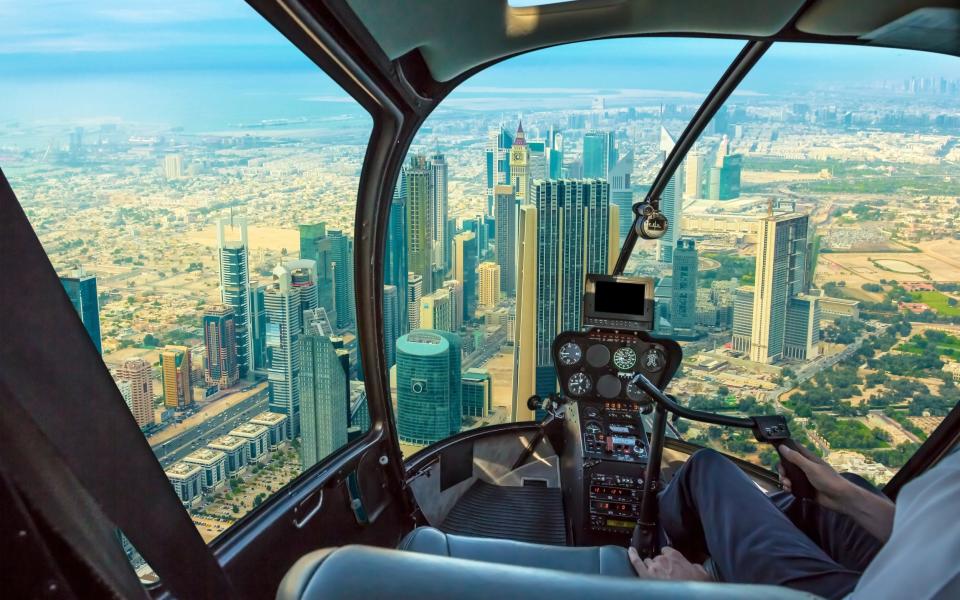It’s a sci-fi vibe: a city of shimmering skyscrapers where futuristic planes glide back and forth along the skyline. But it’s not a galaxy far away, it will be London in two years’ time, according to an article published by the Department for Transport. The Future of Flight action plan revealed that the city’s first flying taxis could take to the air as early as 2026, followed by autonomous air taxis in 2030.
“The latest battery technology will revolutionize transport as we know it – this plan will ensure we have the infrastructure and regulation to make this a reality,” said Aviation and Technology Minister Anthony Browne. “From flying taxis to emergency service drones, we’re ensuring the UK is at the forefront of this dramatic change in transport, improving people’s lives and stimulating the economy.”
London isn’t the only major city exploring the possibilities of taking to the skies with eVTOL (electric vertical takeoff and landing) vehicles; racing will be the first place to do this. Last month, Dubai announced its intention to launch the world’s first electric air taxi service in 2026, while New York has set an even more ambitious 2025 target. Both are working with Californian company Joby Aviation, which is planning its first urban test flight in 2025. Downtown Manhattan Heliport in November 2023.


However, there is another country that appears to be in the lead: Last year, the Civil Aviation Authority of China (CAAC) approved an eVTOL taxi produced by EHang, a technology company based in Guangdong province. An £80m deal has been struck with the city of Hefei to provide 100 vehicles for tourist flights and emergency services. Meanwhile, companies looking to launch their services in London are still waiting for the green light from the Civil Aviation Authority (CAA).
What exactly are eVTOLs?
Approximately 150 companies are currently engaged in developing eVTOL; Each design is different from the other, but mostly they look like futuristic helicopters. As the name suggests, they are battery-powered, so they are touted as a much greener alternative to combustion-powered transportation (although whether they are truly environmentally friendly seems to be a matter of debate). They’re also supposedly much quieter: California-based eVTOL maker Archer Aviation, for example, claims that its aircraft will make significantly less noise in flight than a car passing by at 30 miles per hour.
These vehicles can take off and land vertically, which is advantageous in an urban environment. It’s not like they could settle in a supermarket parking lot: infrastructure would either need to be built or redesigned, meaning small airports or “vertiports” could proliferate in major cities.


This poses its own challenges: How many need to be built, how will space be found to build them, and how will customers get to and from the landing strips? Will they be able to walk or will they have to call an Uber?
“While space is crucial in London, there are existing airports in and around the capital that could be adapted to support electric flight,” says Will Nathan of Vertical Aerospace, a British eVTOL manufacturer based in Bristol.
“There are companies exploring the potential of adapting rooftops in London to provide a suitable route network. This will also involve the adaptation of existing airports such as Heathrow or Manchester, as well as the development of new dedicated ‘vertiports’ to be designed for this particular aircraft. Skyports, a UK-based vertiport developer, recently announced plans to build such a facility in Bicester, Oxfordshire,” says Nathan.
How expensive will they be?
Could taking an air taxi be as cheap and simple as booking an Uber in the near future? Some eVTOL companies are promising fares as low as $3 (£2.40) per mile, but a study by NASA estimates that a quote of up to $11 (£9) per mile may be a more realistic offer. It looks pretty affordable, but is it really feasible with a production cost of around £1 million per aircraft?


According to Nathan, eVTOL travel will be aimed at the rich, albeit in the short term. “Our goal is for these electric planes to become a modern and iconic method of transportation around the world,” he says. “As with all new technologies where demand is high and supply is limited, as with the first smartphones or electric cars, we expect prices to be at a premium initially, but then fully drop as supply increases.
“The operating costs of these aircraft are also significantly lower than a conventional airplane or helicopter, and over time we expect eVTOLs to compete with traditional forms of ground transportation such as trains and taxis.”
Of course, this assumes they can gain the public’s trust. The inherent problem with air travel is that when things go wrong, they often go catastrophically wrong, and while eVTOLs are overloaded with failsafes to prevent such disaster (some companies promise two emergency spares for each component), travelers may prefer to stick with cars and trains for now .
However, by 2030 the picture may be very different. Approval from the CAA is sure to provide a huge boost to consumer confidence in eVTOL travel, and as long as providers can operate their services without incident, there’s no reason why flying taxis can’t take to the skies over London and elsewhere. world – in the very near future.